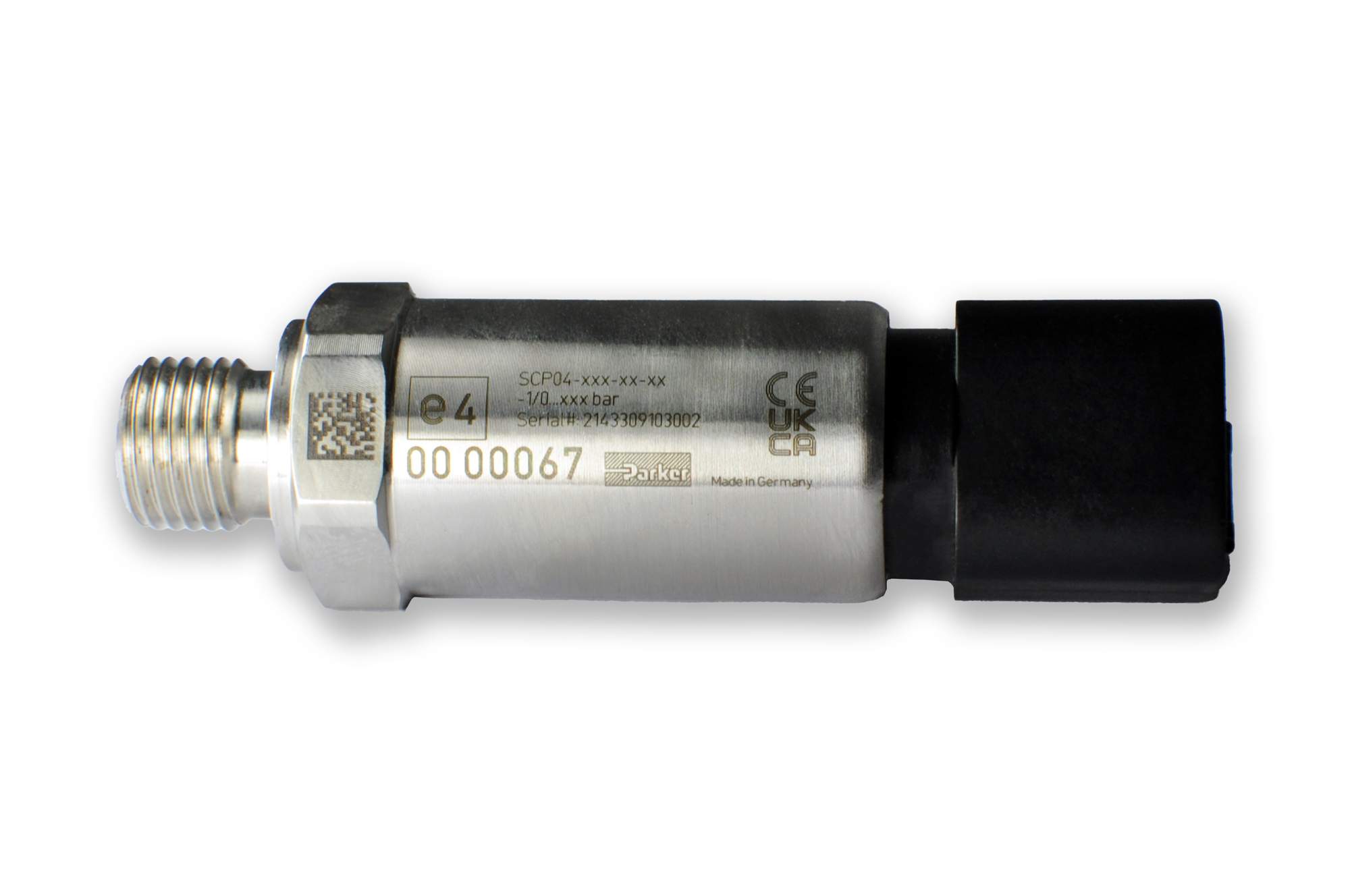Parker Hannifin has developed the SensoControl SCP04 pressure sensor for use in hydrogen applications
With this new sensor, Parker is looking towards the future and following its strategy to develop products for new markets and applications. Parker believes that Hydrogen is more and more likely to be frequently used in a range of transport equipment from trucks to buses to trains and marine. In order to enable the production, transport, fuelling and storage of hydrogen, new products are necessary and the SCP04 pressure sensor has been designed to meet the chemical and physical requirements in the whole hydrogen lifecycle.
The SCP04 offers a high-pressure resistance and, as a digitally calibrated piezo-resistive measuring cell, it detects pressures from 4 bar up to 1,000 bar. The special-bonded connection withstands low temperatures, shocks or vibration, which makes it especially robust for the most demanding environments. It also has different mounting options to provide flexibility of positioning.
Its monolithic design removes the need for internal seals and eliminates leakage due to material fatigue. The SCP04 has no pressure transfer fluid and no large, pressurised areas. It is also vacuum-tight and elastomer-free. The process connections have been designed to be gasket-free to meet the requirements of hydrogen applications.
The SCP04’s robust construction from 316L stainless-steel and low permeability result in a wide media resistance and prevent embrittlement of the metal by ionised hydrogen. Additionally, the sensor offers high connectivity through high compatibility with different available connectors and can be configured with various output signals.
- UK manufacturing steps up to COVID-19 crisis - April 2, 2020
- Clustering Innovation - March 12, 2020
- A Global Monitor - March 6, 2020

